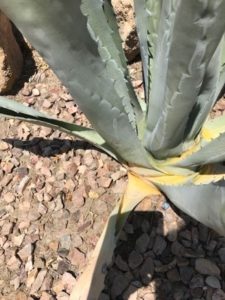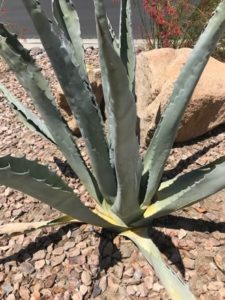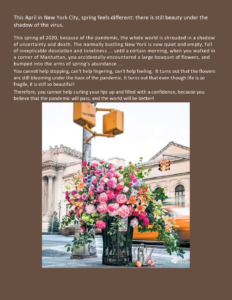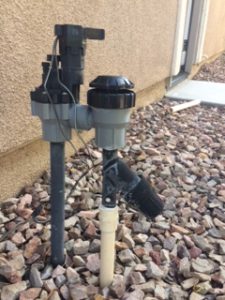 Many residents have expressed various opinions about the pros and cons of a bulk internet agreement. It could be a “good thing” for your landscaping!
Many residents have expressed various opinions about the pros and cons of a bulk internet agreement. It could be a “good thing” for your landscaping!
There are so many new products on the market that function “wirelessly” using the internet. In common language, they are “Wi-Fi based.” What is the definition of Wi-Fi you ask? Well, I don’t think it is “Wireless Internet For Idiots” as some have proposed.
According to one internet source, the definition of Wi-Fi is as follows:
“A local area network that uses high frequency radio signals to transmit and receive data over distances of a few hundred feet.”
A Wi-Fi unit does not need to be hard-wired into another communication device to function and in some cases, may operate on batteries rather than traditional electricity.
Recent additions to the wireless product market include doorbells with audio and video, home security systems, HVAC thermostats, Amazon Alexa, Google Home, wireless speakers for your sound system, and of course, puppy cams!
Did you know that there are also wireless irrigation controllers? I’ve used one for almost two years and it has proven to be quite effective. I live in Colorado in the summer. Thanks to my internet-based “smart” Wi-Fi controller, I can control all of the functions of my sprinkler system from Colorado! Now that year-round internet service is coming to SCSH from Frontier, this might be something you want to consider.
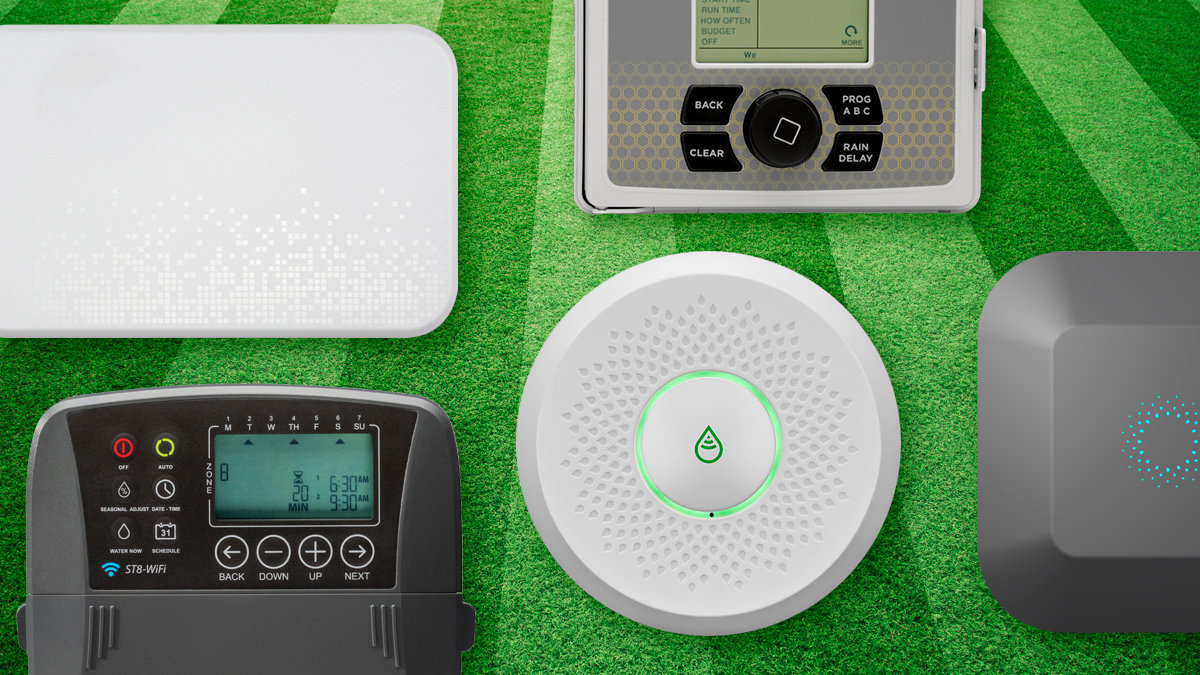
What is a “smart” controller? A smart irrigation controller has built-in water saving features which may include a sensor to adjust to the optimal sprinkler run-time based on local weather conditions.
Here are just a few of the great benefits of owning this product, from my personal experience:
Earlier this Spring, my neighbor called me to say that he had spotted a broken drip head in our front yard. It was hard to miss since it was spraying water into the street. Within minutes I had shut off that zone using my cell phone . . . or my iPad . . . or my computer . . . I can’t remember which one I used, but any one of them would have worked! Then it was just a matter of contacting the gardener to schedule a repair. When he finished the repair, I could re-start that zone, or he could have, since he has the username and password for my system. Alternatively, I could have suspended watering in that zone for a period of time (long enough for him to make the repair) and then it would have re-started on its own.
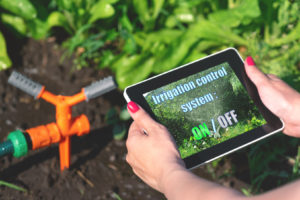 Or how about this one . . . every fall and spring I go around and check all the heads in every zone. Since I can start and stop the water flow in each zone with my phone, there is no need to run back and forth to the controller when I locate a broken or clogged head (or worse, a leaking pipe) or to change zones.
Or how about this one . . . every fall and spring I go around and check all the heads in every zone. Since I can start and stop the water flow in each zone with my phone, there is no need to run back and forth to the controller when I locate a broken or clogged head (or worse, a leaking pipe) or to change zones.
Although I don’t believe I have saved a great deal of water (since I don’t want to lose plants in the summer and we don’t have an abundance of rain), there is potential for water savings from “smart” controllers.
The manufacturer of my unit has developed irrigation management software which automatically adjusts the irrigation schedule using real-time, internet-sourced data based on local weather – it can suspend irrigation if it’s forecast to rain, or if it has rained a certain amount (you set the parameters) or if the wind is blowing. In my mind the best feature is that it will water longer or more often when temps hit certain levels, and again you are able to determine when this should occur.
Here are questions you might want to consider before investing in a Wi-Fi controller:
- Make sure the irrigation software is compatible with your phone or computer operating system (e.g. iOS or Android on a cell phone); and make sure it is compatible with Frontier’s equipment
- Is there a monthly or annual fee to use the software?
- If the controller loses internet-connectivity for more than 24 hours, will you receive an email to that effect?
- Will the clock need to be “re-set” if power goes out, and will the memory retain the watering schedule?
- Does the model you are considering have a feature that enables the user to also install a flow meter to monitor for leaks?
- Can the unit be controlled from the timer box as well as remotely? This is important if you don’t want to give your gardener access to the Wi-Fi function.
- Does the unit come with a weather-protective, lock-able box or does that need to be purchased separately?
- Prior to purchasing, make sure you have a strong cell signal on your phone when you are standing next to the current controller.
- Make sure you understand the operational features and the associated terminology of the unit you are considering. If there is a video on how to use it, watch it before purchasing.
- Installation should be performed by an irrigation specialist. Also note that some controllers are direct-wired (hardwired) and some are plug-in. If your existing unit is hardwired and you choose a plug-in model you may need the help of an electrician to make the conversion.
- One note to self . . . if you change your settings seasonally, be sure to write down the most recent settings before programming for the new season. I didn’t do that the first fall and had to try to remember what worked when I adjusted for summer the next year!


You may have heard that Coachella Valley Water District (CVWD) and Indio Water Authority offer smart controllers (possibly at no charge) to their respective customers who don’t already have one. Here is a link to the page on the CVWD website which details info about the various types of landscape-related rebates that may be available: CVWD Rebates
The CVWD Rebate and Conservation department is very helpful, so don’t hesitate to contact them with questions. Keep in mind that the free controllers may be an upgrade to what the builder provided, but they may not be as functional as what is available from other manufacturers. There may be costs associated with installation in addition to the cost of the controller, especially electrical modifications, if you are a CVWD customer.
Indio Water Authority (IWA) will let their customers choose a smart controller from any manufacturer. The homeowner purchases the controller and after installation, would apply for a rebate. The form attached below does not contain specific info on rebates for irrigation controllers. Contact the rebate department at IWA to see if the model you have selected qualifies for the rebate, what the requirements are for proof of purchase and installation, and what the maximum reimbursement might be before buying any product. Here is a link to the rebate form: IWA Rebate Form
Indio Water Authority has a fabulous website that gives their customers a wealth of info, including notification if they detect higher-than-normal water usage. Be sure to provide them with your contact info to take advantage of this service.
Regardless of which controller you decide to install, educate yourself on the various features and benefits, as well as final installed cost, and then make your decision. Remember, if you’re going to New York, don’t buy tickets for Chicago. Get the controller that best suits your needs. It’s a one-time expense that should last quite some time and could save some aggravation.
Prepared by:
Amy Tomlinson
President, SCSH Desert Gardeners Club
Corey Unfried
Membership Chair, SCSH Desert Gardeners Club






 Many residents have expressed various opinions about the pros and cons of a bulk internet agreement. It could be a “good thing” for your landscaping!
Many residents have expressed various opinions about the pros and cons of a bulk internet agreement. It could be a “good thing” for your landscaping!
 Or how about this one . . . every fall and spring I go around and check all the heads in every zone. Since I can start and stop the water flow in each zone with my phone, there is no need to run back and forth to the controller when I locate a broken or clogged head (or worse, a leaking pipe) or to change zones.
Or how about this one . . . every fall and spring I go around and check all the heads in every zone. Since I can start and stop the water flow in each zone with my phone, there is no need to run back and forth to the controller when I locate a broken or clogged head (or worse, a leaking pipe) or to change zones.

